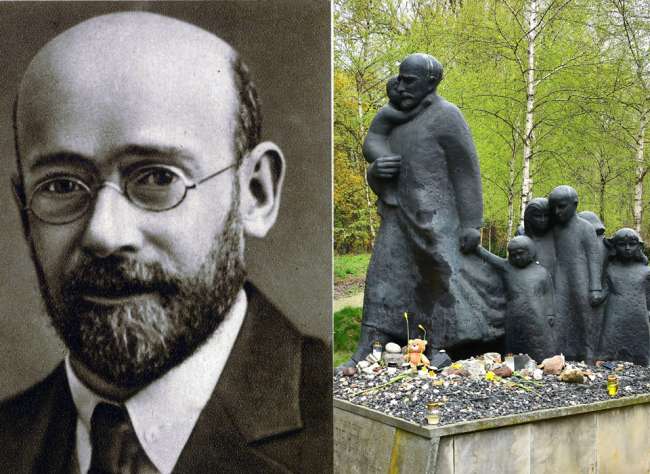Adolf Hitler and the Nazi Party’s rise to power in Germany ushered in an era of attacks against people Hitler deemed undesirable. Jews living across Europe became the primary target of Nazi hatred and violence. Attacks against other groups of people—such as individuals with mental or physical disabilities, political prisoners, Romani, Soviet citizens and prisoners of war, LGBT people, Slavs, and Jehovah’s Witnesses—also became a part of the Nazi program to “purify” German society. Those who did not fit within Nazi standards of a “master race” faced capture and horrific brutality in the attempted genocide now known as the Holocaust. From 1939 to 1941, the Nazis steadily took steps toward a formal policy of extermination. Known as the Final Solution, this policy spread to each region that fell under Nazi rule throughout World War II.
Anti-Semitism had been present throughout Europe for centuries, peaking during times of upheaval, such as the Crusades or outbreaks of plague. This historical precedent perpetuated hateful stereotypes that again resurfaced in the era of upheaval that followed Germany’s defeat in World War I. While anti-Semitism had been limited to fringe political groups, the rising popularity of the Nazi Party helped promote ideas of segregating and removing the Jewish population from the region. While not all Germans actively supported the anti-Semitic attacks taken by the Nazis, many adopted an attitude of indifference toward the treatment of their Jewish neighbors.
Hitler and the Nazi Party actively encouraged this indifference, and through the use of anti-Semitic propaganda forcibly taught in schools and printed in newspapers, Germans increasingly looked away as the number of attacks on Jewish communities rose. Some even assisted in seeking out and betraying Jewish families who went into hiding. This pattern of behavior severely affected Anne Frank, her family, and four others who joined the Franks while hiding in Nazi-occupied Amsterdam. Similarly, Eva Schloss, who lived near and was childhood friends with Anne Frank, remembered her own family’s betrayal by a nurse posing as a member of the Dutch Resistance. This nurse pretended to help Jews find a safe hiding place, and as she did so, she fed information about their location to the Nazis.
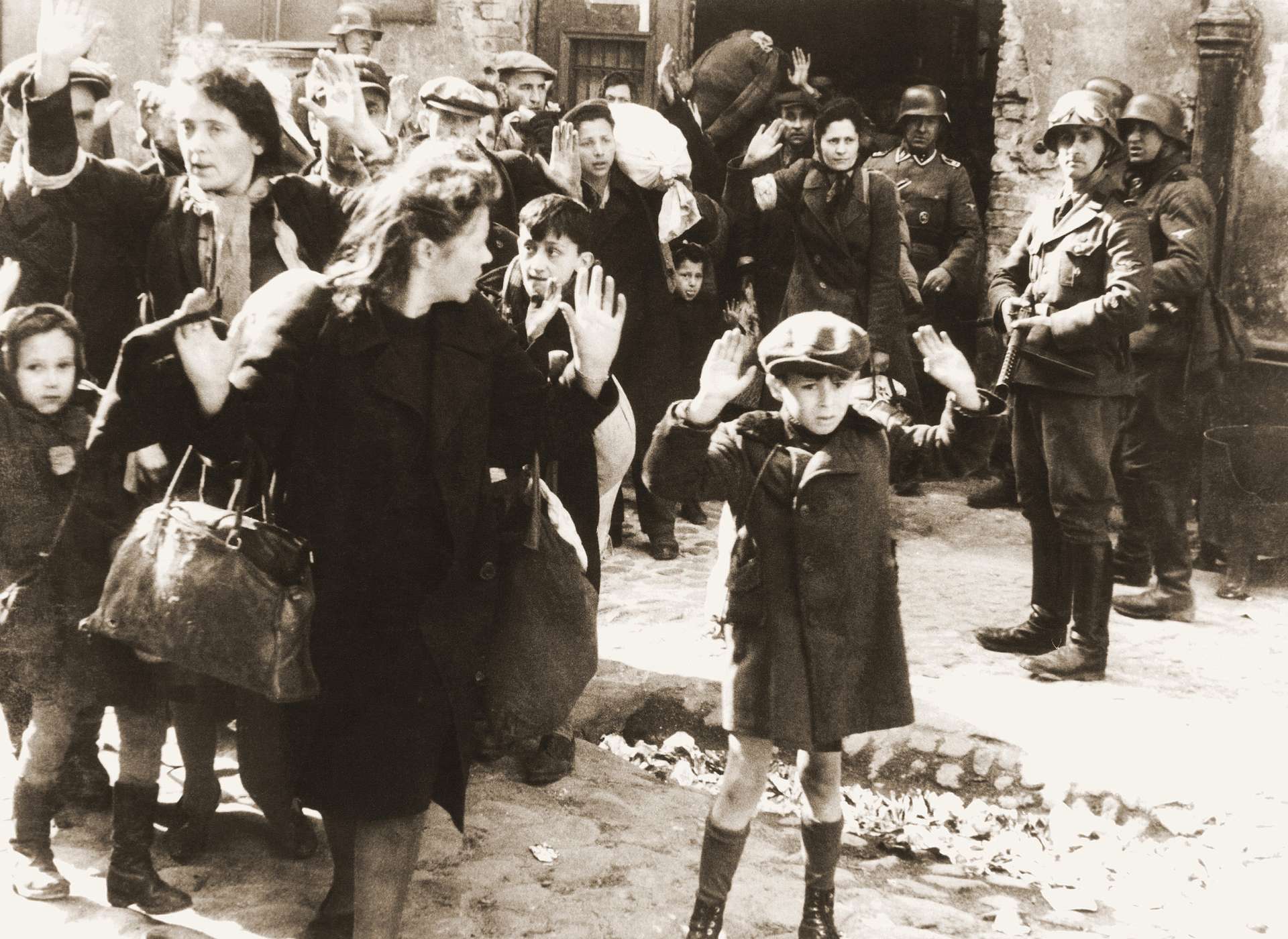
Nazi soldiers round up Jews for arrest during Warsaw Ghetto Uprising. National Archives and Records Administration (6003996)
In January 1942, at the Wannsee Conference held in Berlin, Reinhard Heydrich, Chief of the Reich Main Security Office, presented a plan for the complete extermination of European Jews. This planned “Final Solution” was set to occur in camps constructed for the purpose of facilitating mass murder. Heydrich decided German-occupied Poland was the ideal location for these death camps. While the Wannsee Conference signifies the moment in which the Nazi Party officially adopted the Final Solution, efforts to exterminate Jews across Europe, especially in the East, were already well underway, and the construction of death camps had already begun. Heinrich Himmler, Head of the SS, oversaw enforcement of the Final Solution. In a speech delivered in October 1943, Himmler claimed the Holocaust was a “moral right” and “a page of glory in our history which is never to be written.”
Through this official policy of extermination, the Nazis organized a system of mass murder that claimed the lives of over six million people based on their Jewish identity alone. Nazi demands for a “master race” also led to more than 12 million additional deaths, placing the estimated number of victims around 18 million, although specific numbers are difficult know. The camp system allowed Nazis to move millions of people into forced labor and death camps across occupied territories. The deadliest of these camps was the Auschwitz complex, which included Birkenau and other subcamps. Around one million people died at the Auschwitz complex alone. Altogether, the Nazis established six death camps that collectively became the site of over three million deaths.
"There was joy, yes—we were free, the gates were open—but where were we to go? The liberation had come too late, not only for the dead, but for us, the living, as well."
Hadassah Rosensaft, liberated from the Bergen-Belsen Concentration Camp
Nazi attacks against European Jews did not remain a secret to the outside world. Before the 1936 Olympics in Berlin, Herman Neugass, a Jewish track star from Tulane University refused to compete in protest of Nazi anti-Semitism. In 1935, The Washington Post criticized the Nuremberg Laws that denied Jews citizenship, prohibited marriage with non-Jews, and denied the ability to participate in public life. Following the adoption of the Final Solution, Gerhart M. Riegner, Secretary of the World Jewish Congress in Geneva, sent a telegram in 1942 to both the United Kingdom and United States with information about the ongoing genocide against European Jews. After Allied intelligence confirmed the legitimacy of the telegram, news reached the US press in November 1942. As word spread, Jewish communities in Western countries declared December 2, 1942, an international day of mourning. Synagogues across the US held special services, and thousands of Jewish residents marched in New York City to draw attention to the atrocities of the Holocaust. In spite of the growing attention, a sense of disbelief persisted among American and British leaders who believed the accounts of Nazi death camps were too extreme to be true. Until American forces witnessed the camps firsthand, many American leaders saw the shocking news about the camps as a product of Soviet propaganda.
Liberation and Fallout
Liberation from Nazi camps came in an uneven wave, initially from the East, as Soviet forces were the first to reach concentration camps, and then from the West, as American and British soldiers closed in on Berlin. The experience of liberation was similarly uneven. Allied soldiers were stunned by the horror they encountered. For Harold Berkman, who helped liberate Buchenwald on April 11, 1945, walking into the camp was a traumatic experience. He remembered that day, stating, “When I walked into Buchenwald… the ovens were still warm. The inmates were 70 pounds, 75 pounds, undernourished. I saw bones where the furnaces were stacked high, and that’s another thing you never forget.” For the prisoners, liberation did not come with a bold stroke, but instead stretched over weeks, months, and even years. Hadassah Rosensaft, who was liberated from Bergen-Belsen, described what that fateful date felt like when it finally arrived, saying, “There was joy, yes—we were free, the gates were open—but where were we to go? The liberation had come too late, not only for the dead, but for us, the living, as well.”
As survivors faced the daunting challenge of returning to life after suffering years of trauma, the rest of the world came to see what occurred inside the Nazi camps. Careful documentation kept by the Nazis themselves, including photographs, written records, and film, showed in explicit detail what occurred. This evidence was put on public display following the liberation of the camps. US generals ordered civilians living in nearby towns who claimed ignorance of what had happened to tour the camps and confront the carnage. The scale of mass murder was such that Raphael Lemkin, a Polish-Jewish lawyer, created a new term to describe what occurred to European Jews under Nazi rule. Taking geno-, from the Greek for ‘race’ or ‘tribe,’ and –cide, from the Latin for to kill, Lemkin created the term genocide in 1944. The following year, the International Military Tribunal trying war criminals at Nuremberg included the term in the indictment.
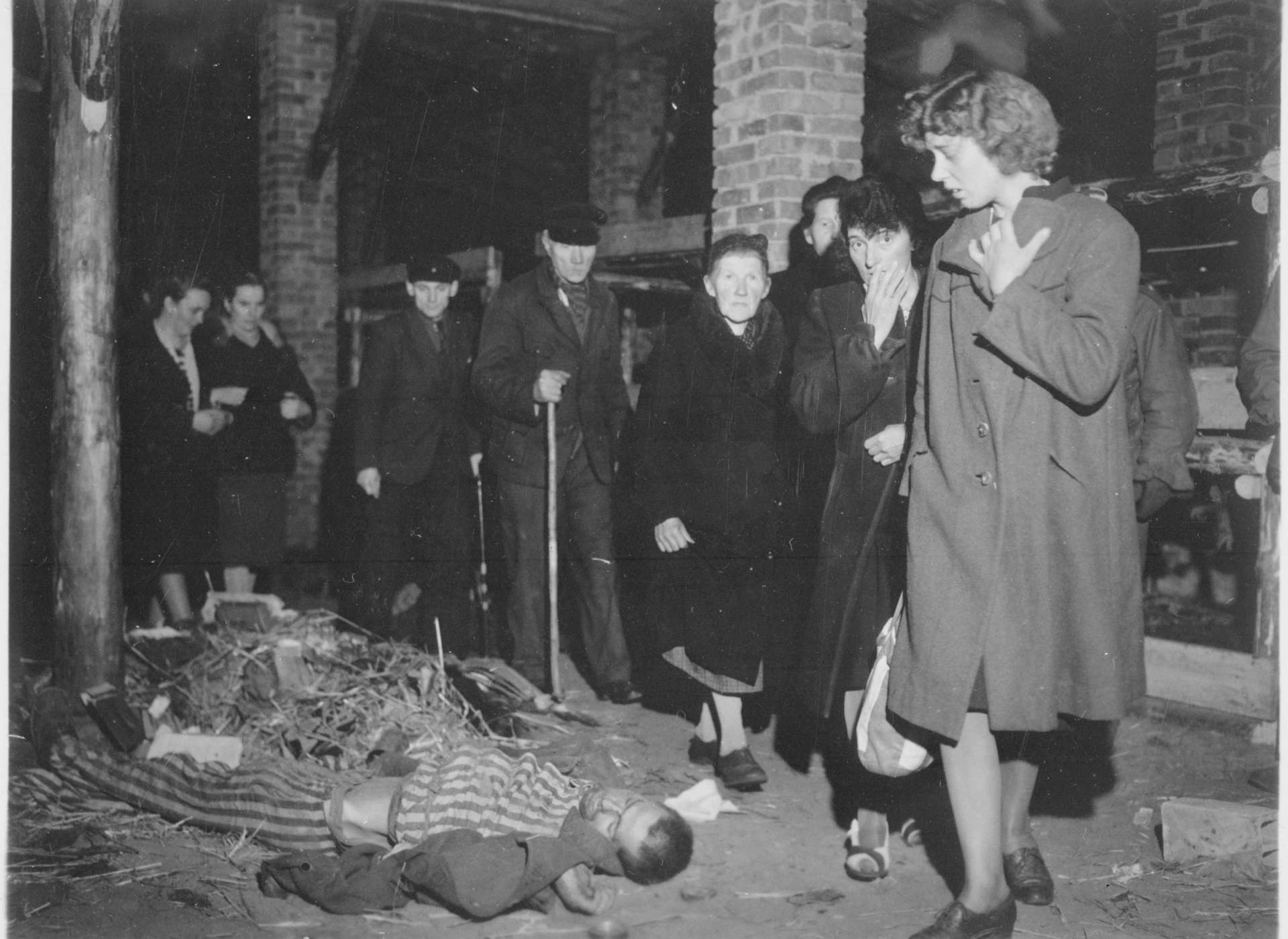
Under orders of the 82nd Airborne Division, citizens of Ludwigslust, Germany are walked through a nearby concentration camp. National Archives and Records Administration (531297)
The Holocaust forced nations across the globe to redefine the meaning of justice; the same also became true for the protection of human rights. The new United Nations (UN), formed in the final months of World War II, took on the issue of human rights in December 1948, adopting Resolution 217, also known as the Universal Declaration of Human Rights. The idea for such a declaration existed in the years before the war ended. A speech delivered by President Roosevelt in January 1941 introduced the idea of the Four Freedoms—freedom of speech, freedom to worship, freedom from fear, and freedom from want. The Charter of the UN reaffirmed the protection of these freedoms, as well as the “fundamental human rights… the dignity and worth of the human person.” However, what human rights were exactly still required clarification. In response, a committee chaired by Eleanor Roosevelt drafted the Universal Declaration of Human Rights. Eleanor incorporated the idea of the Four Freedoms introduced by her late husband into this declaration, and on December 10, 1948, the UN approved Resolution 217, which included 30 articles outlining an individual’s rights, and prohibitions against slavery and torture.
The world was forever changed in the wake of the Holocaust. Survivors struggled to create a new life after the war. With many lacking homes to return to and Allied nations ill-prepared to take in postwar refugees, the UN approved the creation of a new state of Israel on May 29, 1948. As the world confronted the devastation left at the end of World War II, people everywhere struggled to comprehend the scale of bloodshed caused by the ideology of the Nazi Party. In spite of the overwhelming devastation of the Holocaust, people of the world over could no longer look away. General Dwight D. Eisenhower commented on the horrors of the Holocaust, stating people had a responsibility to face such difficult histories, lest any effort arises to dismiss the atrocities or deny its truth.
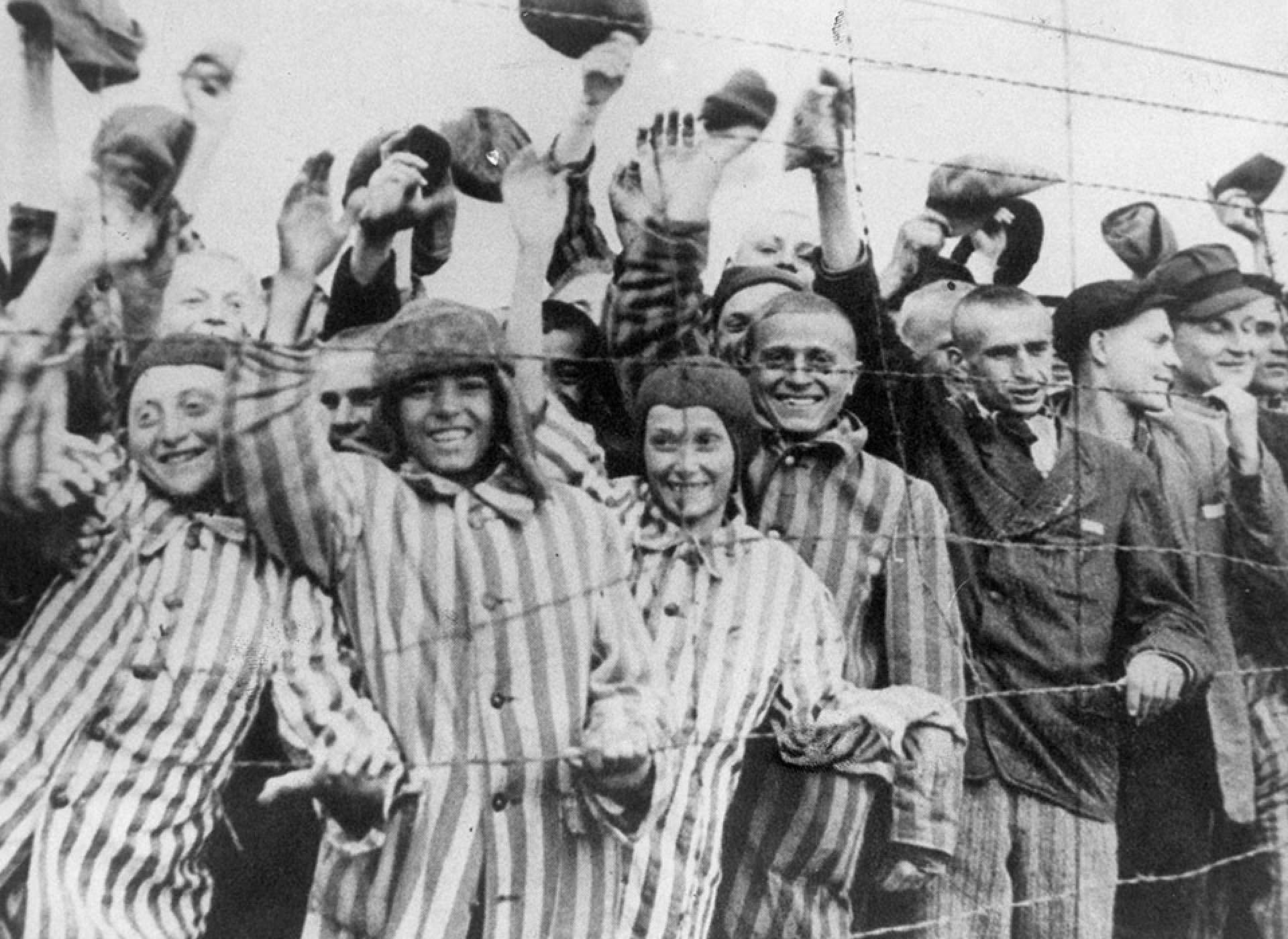
Prisoners of Dachau cheer the liberating US armed forces as they approach the concentration camp. United States Holocaust Memorial Museum (45075)

Like this article? Read more in our online classroom.
This article was originally written for Volume 4: From the Collection to the Classroom, Liberation & Legacy
Kristen D. Burton, PhD
Kristen D. Burton, PhD, is a former Teacher Programs and Curriculum Specialist at The National WWII Museum.
Cite this article:
MLA Citation:
APA Citation:
Chicago Style Citation:
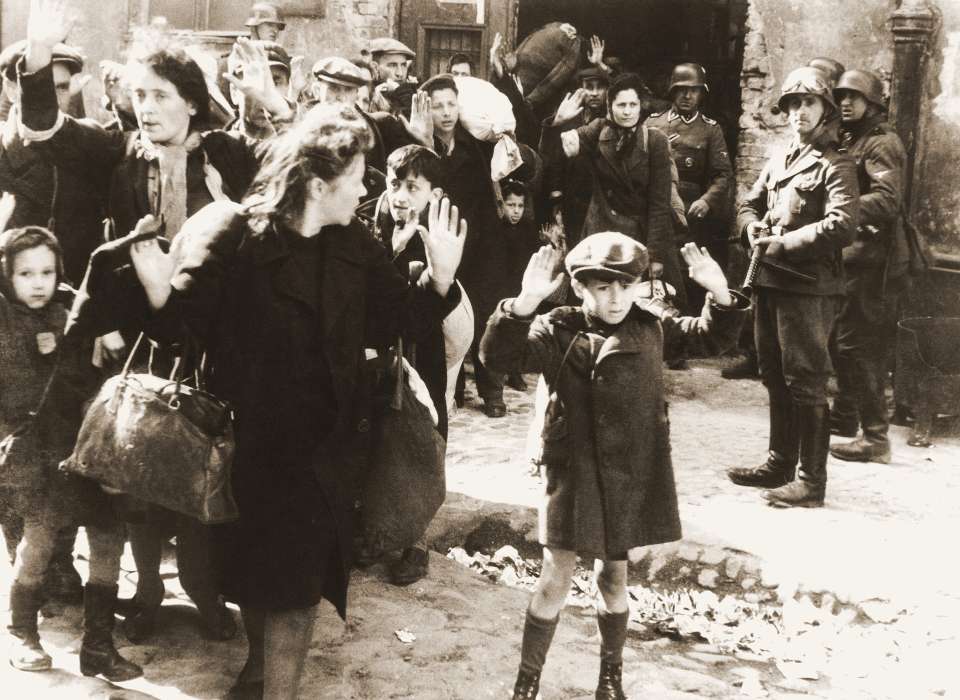
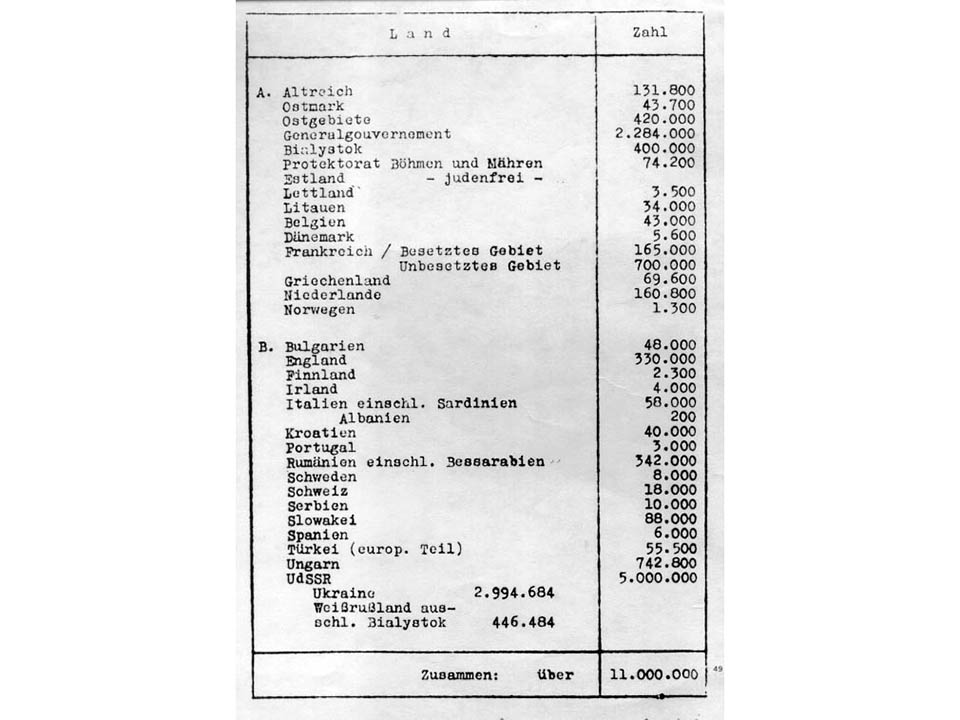
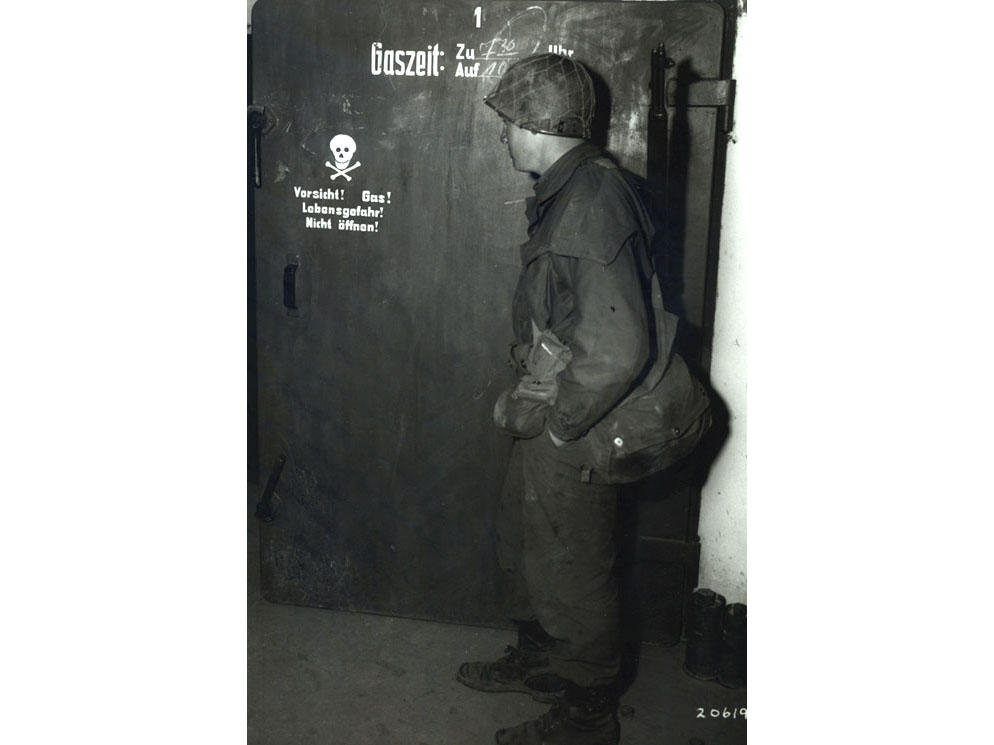
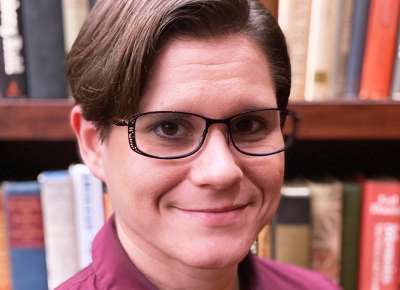
![Max Fuchs, New York City cantor, sings as Rabbi Sydney [sic] Lefkowitz, Richmond, VA, conducts the first Jewish services from Germany.](/sites/default/files/styles/max_650x650/public/2025-10/image1.jpg)


